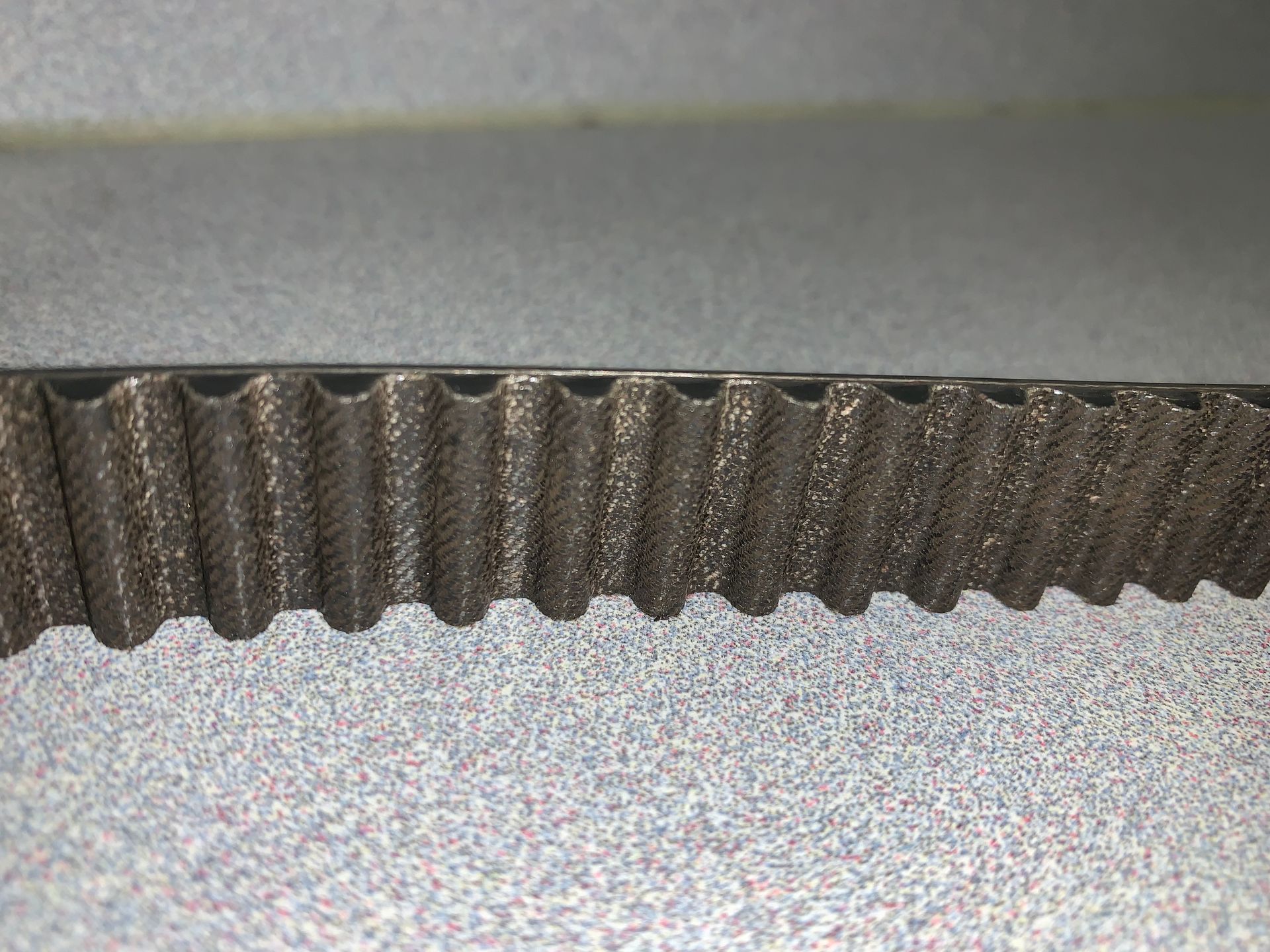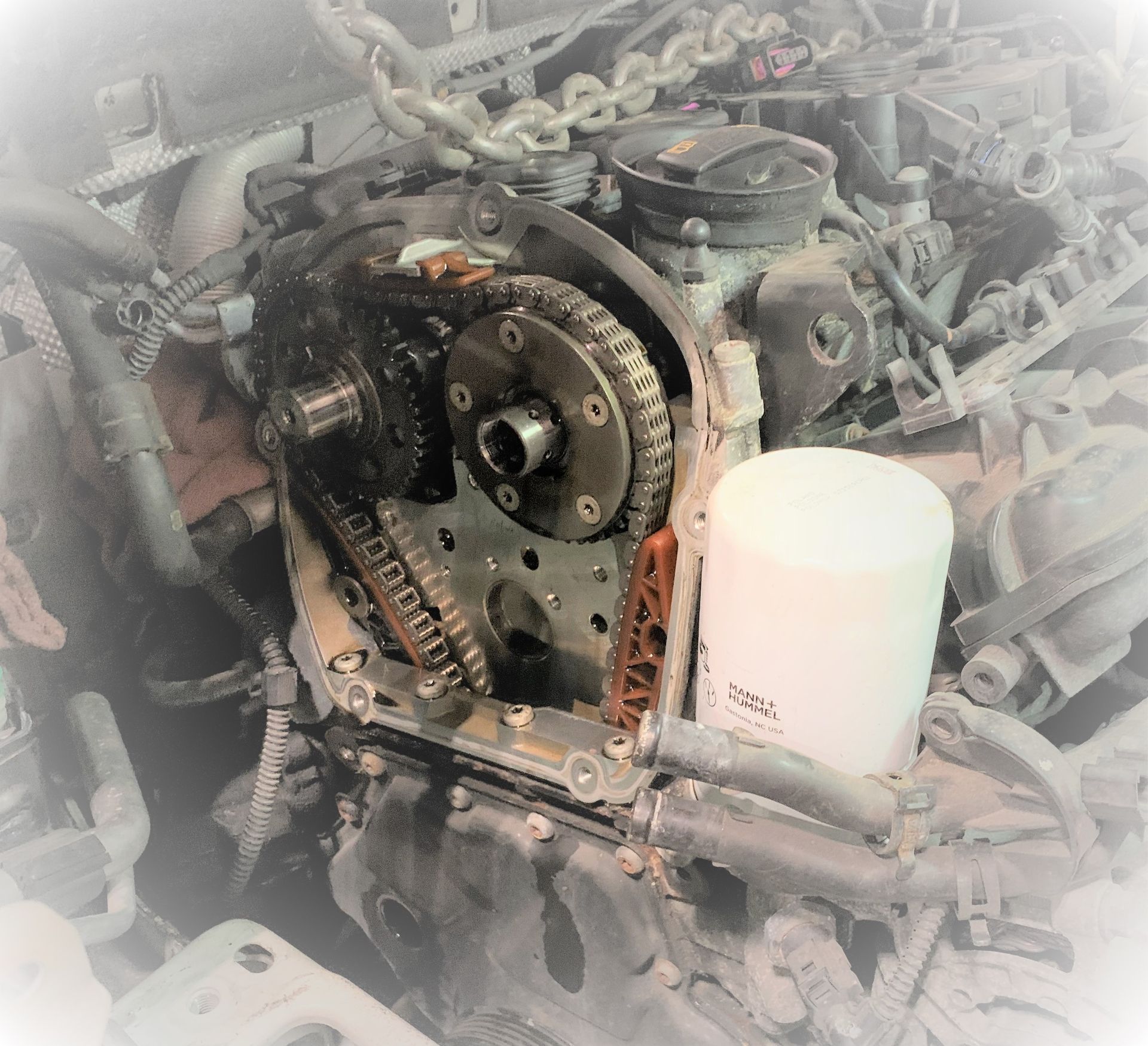
Timing belts are a common vehicle maintenance item and can wear out over time or break without warning. Your car’s engine relies on the timing belt to stay in sync. The timing belt ensures that everything in your engine operates smoothly and keeps you safe while driving. Find out how your timing belt works and when to replace it.
What Is A Timing Belt?
Your timing belt is made of rubber and has hard “teeth” that connect with gearwheels in the camshafts and crankshaft. The camshafts and crankshaft on a combustible engine work together to control the intake of fuel and the release of exhaust fumes. The timing belt is responsible for synchronizing the operations of the crankshaft and camshafts. If the engine components do not work in unison, your engine could experience loss of pressure, poor combustion, and power loss. This can result in costly repairs.

Your car may have a timing chain instead of a timing belt, depending on your vehicle model. The timing chain works just like a belt but is made of metal instead of rubber. It looks similar to a bicycle chain. If your vehicle has a timing chain, you may be able to go for longer mileage intervals before replacing your chain.
When Should I Replace My Timing Belt?
At Lou’s Car Care, our experienced auto technicians recommend replacing your timing belt or chain at the mileage intervals your manufacturer recommends. Typically every 60,000 – 100,000 miles. Every vehicle manufacturer is different. To verify your specific recommended timing belt replacement, consult your vehicle owner’s manual or simply schedule service at Lou’s Car Care.
As mentioned earlier, timing belts are made of rubber. They will wear down and eventually break. Your engine will stop running if the timing belt or chain breaks. If a loose timing belt becomes skewed, it could cause components inside the engine to come out of sync and result in serious damage to the engine.
If you do not replace your timing belt by the vehicle manufacturer’s recommended interval you could experience:
- Broken or bent valves
- Cylinder head damage
- Camshaft or crankshaft damage
- Piston and cylinder wall damage
- Total engine failure
Signs For Timing Belt Replacement
- Clicking or Squealing Noises
Missing “teeth” can cause a bad-timing belt to make clicking noises. A weak timing belt tensioner or idler pulley may produce a high-pitched squealing, squeaky, or rattling noise.
- Decreased Engine Performance
- Trouble Starting the Vehicle
- Overheating
- Leaking Oil
- Vibration or shaking
- Check Engine Light On

Replacing your timing belt or chain before it breaks will prevent engine damage or failure. If you’re not sure if your timing belt needs replacement, we can help! One of our auto technicians can inspect and identify any damage to your timing belt. All work completed at Lou’s Car Care comes backed by our 3 year/ 36,000 mile Warranty on parts and labor. Call us or schedule your appointment online today!
Lou’s Car Care is the right choice for all of your vehicle repair and maintenance needs. Serving the Baldwinsville, NY, and surrounding communities since 1976!
Let's Connect! Click on the links below to stay in touch with the Lou's Car Care Community:








